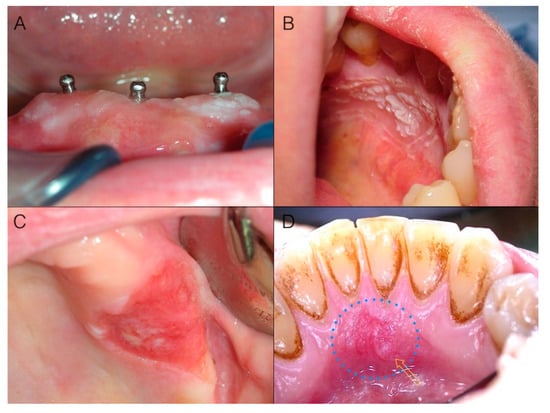Oral and Systemic Health: Border Dentistry and the Borders of Dental Practice
A topical collection in Oral (ISSN 2673-6373).
Viewed by 24921Editors
Interests: oral medicine; medication-related osteonecrosis of the jaw; head and neck oncology; viral oral infections; dental public health; teledentistry
Special Issues, Collections and Topics in MDPI journals
Interests: oral squamous cell carcinoma; head and neck cancer; prognostic markers in tissues; odontogenic neoformations
Special Issues, Collections and Topics in MDPI journals
Topical Collection Information
Dear Colleagues,
This Topical Collection aims to meet the need to provide a response to the excessive compartmentalization of knowledge that has traditionally existed between dentistry and other disciplines, such as health sciences, life sciences, and social and environmental sciences. In particular, the growing crisis of the traditional “disease-centered” care system requires a radical rethinking of traditional dental and oral health management, favoring a paradigm shift toward a multidisciplinary “patient-centered” care approach. Indeed, the need to face emerging problems, such as the progressive aging of the population with the associated increase in dental care needs, and the appearance of new opportunities, in particular the impact of technological progress on healthcare, represent the pillars on which to build novel therapeutic strategies in dentistry.
The aim of this Topical Collection is to provide a platform on which different specialists can address, in a multidisciplinary way, “border dentistry”, highlighting the links between oral and systemic health.
Prof. Dr. Giuseppina Campisi
Dr. Marco Mascitti
Collection Editors
Manuscript Submission Information
Manuscripts should be submitted online at www.mdpi.com by registering and logging in to this website. Once you are registered, click here to go to the submission form. Manuscripts can be submitted until the deadline. All submissions that pass pre-check are peer-reviewed. Accepted papers will be published continuously in the journal (as soon as accepted) and will be listed together on the collection website. Research articles, review articles as well as short communications are invited. For planned papers, a title and short abstract (about 100 words) can be sent to the Editorial Office for announcement on this website.
Submitted manuscripts should not have been published previously, nor be under consideration for publication elsewhere (except conference proceedings papers). All manuscripts are thoroughly refereed through a single-blind peer-review process. A guide for authors and other relevant information for submission of manuscripts is available on the Instructions for Authors page. Oral is an international peer-reviewed open access quarterly journal published by MDPI.
Please visit the Instructions for Authors page before submitting a manuscript. The Article Processing Charge (APC) for publication in this open access journal is 1000 CHF (Swiss Francs). Submitted papers should be well formatted and use good English. Authors may use MDPI's English editing service prior to publication or during author revisions.







